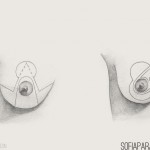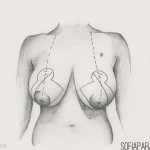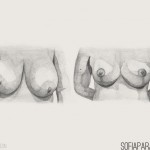Breasts that are out of proportion with the rest of the body can cause many problems. Shoulder pain, back pain and chronic infections under the breast have all been attributed to large breasts.
Overgrowth of breasts can happen in adolescence or after pregnancy or middle age. The excess breast tissue can be removed and the skin tightened to create a normal size and shape. The nipples are normally lifted to suit the new shape of breast and can be done using different techniques each suitable for a specific patient.
The patient normally has a scar around the nipple and a vertical scar from the nipple downwards. The appearance of the scars normally resembles a lollipop shape. There is also another technique where the scar is around the nipple and then vertical from the nipple downwards to continue horizontally under the breast. The surgeon prefers the first method due to a smaller surgical wound and better shape of the breast.
It is not always possible to reduce the breast to a very small size as this may compromise the blood supply to the nipple. Asymmetry in breast size is common and the discrepancy can be addressed during surgery although perfection is not always possible.
Surgery
It is performed under a general anaesthetic and you have to stay in the hospital for at least one night. On the day of the surgery I will come to your room and do some markings on the breast and we will have a final discussion on the size you would like to be. It’s possible that you will have surgical drains coming out of the breasts after the surgery to remove excess fluid. They are normally removed after 24 hours. Pain is moderate and can be controlled by pain-killing injections or tablets. The sutures are removed on the 15th day.
Consequences and complications
After breast reduction surgery breast feeding may not be possible. The nipples will be numb afterwards but do normally recover. Infection may happen but is rare. The blood supply to the nipple may be compromised during the surgery and this might lead to partial loss of the skin of the nipple, but this is extremely rare. Smokers are at greater risk for healing problems. A blood transfusion is not normally required. You can still have breast screening for cancer afterwards if required. The scars normally settles down to white lines but may be problematic in people with a tendency towards bad scarring.
After the surgery
You should keep the breasts strapped up with in a firm athletic top until the sutures are removed. You can sit in a shallow bath for the first 5 days and after that you can wash normally but covering the wounds with waterproof adhesive. Should any water or moisture fall on the wounds you will dry the area using a hair-drier with cold air from a distance.
Heavy exercise should be avoided for at least 4 weeks. Driving needs to be avoided for at least 2 weeks. A soft sports bra should be worn after removal of the sutures for a period of six weeks.



